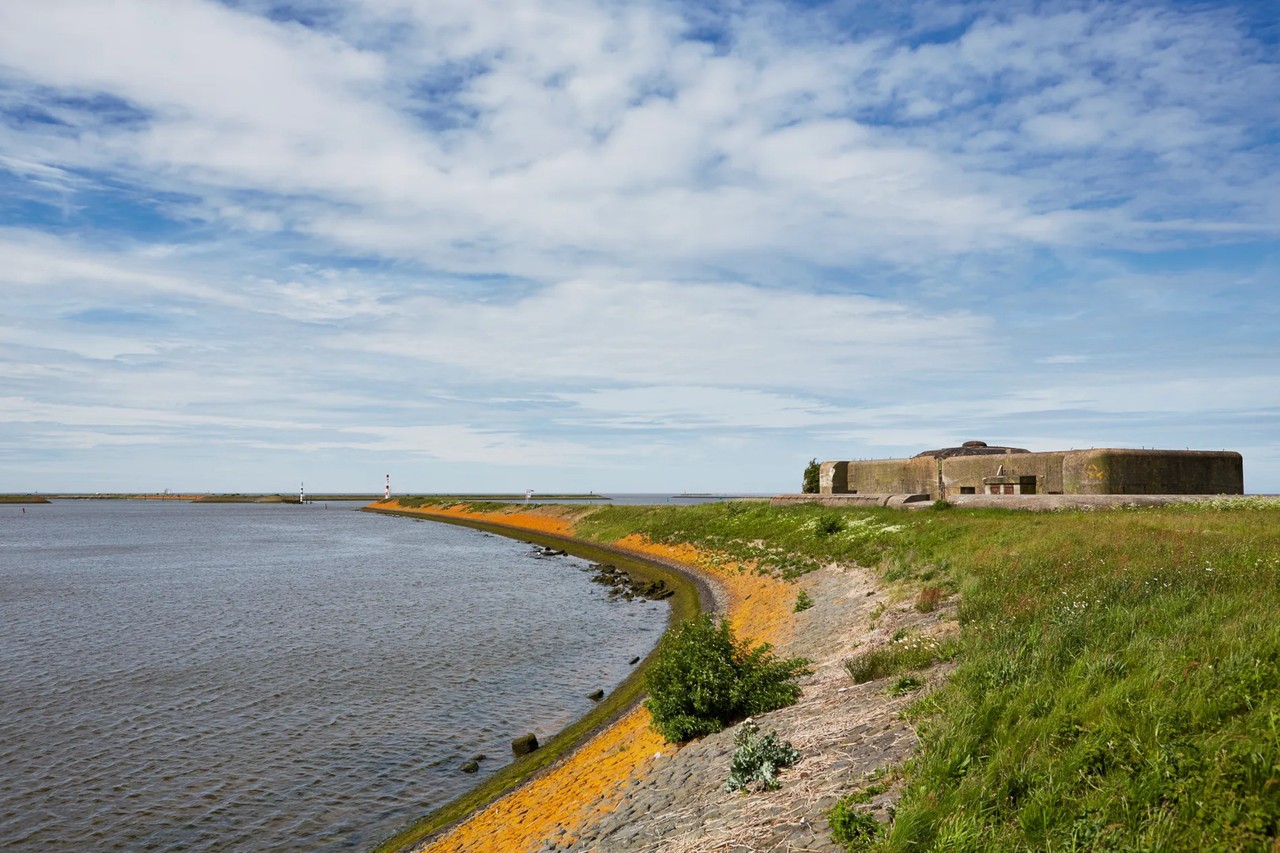When the German occupiers began constructing the Atlantikwall, Den Oever once again became a strategically important site.
Military fortifications had existed in the area since 1932, including thirteen casemates around the Stevin Locks. In 1939, two additional batteries were added in response to the growing threat from Nazi Germany.
However, little actual fighting occurred at the Den Oever stronghold. After the German invasion in 1940, the bunkers and casemates fell into enemy hands and the site became a guarded checkpoint.
Along the Gesterweg stood four warehouse sheds designed to resemble farmhouses. These had been built by the Dutch army in 1937 but were later used by the German military as storage facilities. Their camouflaged appearance was meant to make them less noticeable as potential targets.
From 1943 onward, the position was once again fully manned and strengthened with artillery, including additional foxholes and three bunkers at Kornwerderzand. Den Oever thus became part of the Atlantikwall. Its anti-aircraft guns were frequently in action, as the Afsluitdijk served as a navigation point for Allied pilots. From Den Oever, German troops would fire upon the passing aircraft — their most significant wartime activity, since no direct combat occurred there during the invasion.
Between 1952 and 1960, the Den Oever defenses were reactivated during the Cold War due to the threat from the Soviet Union. The complex on the Gesterweg was repurposed as a Mobilization Complex (MOB-complex). The ground floor was used to store military vehicles, the upper floor for fuel and food, and the basement for ammunition. After the Cold War ended in 1989, the facility’s military function was discontinued.
Vegetation has since reclaimed many of the structures, but several original Dutch casemates remain visible. A few smaller German-built bunkers also survive, including a Kochbunker and two Deckungslöcher (shelters).
